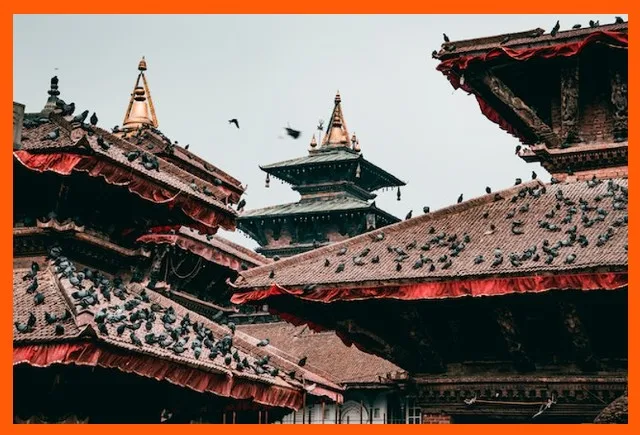 Nepal is a country in South Asia, located in the Himalayas between India and China. It is known for its diverse geography, including the Himalayan mountain range, which includes Mount Everest, the highest peak in the world. The country is also known for its rich culture and history, including the Kathmandu Valley, which is home to several UNESCO World Heritage sites. The official language is Nepali and the currency is the Nepalese rupee. The population is about 29 million people.
Nepal is a country in South Asia, located in the Himalayas between India and China. It is known for its diverse geography, including the Himalayan mountain range, which includes Mount Everest, the highest peak in the world. The country is also known for its rich culture and history, including the Kathmandu Valley, which is home to several UNESCO World Heritage sites. The official language is Nepali and the currency is the Nepalese rupee. The population is about 29 million people.Nepal has a diverse population with many ethnic and linguistic groups. The majority of the population is Hindu, but there are also significant Buddhist and Muslim populations. The country has a rapidly growing economy, with tourism and agriculture being major industries. However, Nepal remains one of the poorest and least developed countries in the world, and it has struggled with political instability and a lack of infrastructure in recent years.
The government of Nepal is a federal parliamentary republic with a multi-party system. The President of Nepal is the head of state and the Prime Minister is the head of government. The country's judiciary is independent of the executive and the legislature.
Nepal has a rich cultural heritage and is known for its art, architecture, music, and festivals. The Kathmandu Valley is home to many important cultural and religious sites, including the Swayambhunath (Monkey Temple), the Pashupatinath Temple, and the Boudhanath Stupa. The country is also famous for its trekking and mountaineering opportunities, and it is a popular destination for adventure tourism.
Despite the many challenges facing Nepal, it is a country with a lot of potential and resilience. It has a rich history, a diverse culture, and a resilient population. There is a lot to be explored in Nepal.

Location: Southern Asia, between China and India
Geographic coordinates: 28 00 N, 84 00 E
Map references: Asia
Capital: Kathmandu
Area: Total: 147,181 Sq. Km
Land: 142,981 Sq. Km
Water: 4,200 Sq Km
Land boundaries: Total: 2,926 km
Border countries: China 1,236 km, India 1,690 km
Population: 23,151,423
Coastline: 0 km (landlocked)
Maritime claims: None (landlocked)
Per Capital Income: US$ 269
Inflation: 4.4%
Gross Domestic Product:3.6%
Topography: From the world's Deepest Gorge, "Kali Gandaki" to the world's highest point on the earth " Mount EVEREST" (8,848 M) Hilly and mountainous 77% and Terai lowlands 23%.
Terrain: Terai or flat river in the south, central hill region, rugged Himalayas in the north.
Elevation extremes: Lowest point: Kanchan Kalan 70 m, highest point: Mount Everest 8,850 m (1999 est.)
Natural resources: Quartz, water, timber, hydro-power, scenic, small deposits of lignite, copper, cobalt, iron ore, etc.
Land use: arable land: 17%, permanent crops: 0%, permanent pastures: 15%, forests, and woodland: 42%, other: 26% (1993 est.)
Irrigated land: 8,500 Sq. Km (1993 est.)
Weather: Climate ranges from Tropical in the lowlands to Arctic in higher altitudes.
Seasons:
Visa: Available at Nepalese Embassies and Nepalese Consulates abroad or on arrival at the Tribhuvan International Airport in Kathmandu.
Geographic coordinates: 28 00 N, 84 00 E
Map references: Asia
Capital: Kathmandu
Area: Total: 147,181 Sq. Km
Land: 142,981 Sq. Km
Water: 4,200 Sq Km
Land boundaries: Total: 2,926 km
Border countries: China 1,236 km, India 1,690 km
Population: 23,151,423
Coastline: 0 km (landlocked)
Maritime claims: None (landlocked)
Per Capital Income: US$ 269
Inflation: 4.4%
Gross Domestic Product:3.6%
People: 40 Ethnic Groups and 70 Spoken Languages
Religion: HinduTopography: From the world's Deepest Gorge, "Kali Gandaki" to the world's highest point on the earth " Mount EVEREST" (8,848 M) Hilly and mountainous 77% and Terai lowlands 23%.
Terrain: Terai or flat river in the south, central hill region, rugged Himalayas in the north.
Elevation extremes: Lowest point: Kanchan Kalan 70 m, highest point: Mount Everest 8,850 m (1999 est.)
Natural resources: Quartz, water, timber, hydro-power, scenic, small deposits of lignite, copper, cobalt, iron ore, etc.
Land use: arable land: 17%, permanent crops: 0%, permanent pastures: 15%, forests, and woodland: 42%, other: 26% (1993 est.)
Irrigated land: 8,500 Sq. Km (1993 est.)
Weather: Climate ranges from Tropical in the lowlands to Arctic in higher altitudes.
Seasons:
- Winter ( December to February )
- Summer (March to May)
- Monsoon (June to August)
- Autumn (September to November)
Visa: Available at Nepalese Embassies and Nepalese Consulates abroad or on arrival at the Tribhuvan International Airport in Kathmandu.